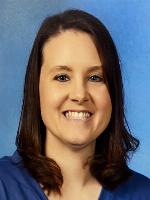

Event Information
I. Background (5 minutes)
A. Discuss funding (Toshiba America) and lower cost alternatives to rockets and technology (Straw Rockets, Pitsco, NASA, 3D printing)
II. Explore Attaching a Data Sensor Peer-to-Peer interaction (10 minutes)
A. Groups will be provided a rocket and a sensor.
They will come up with ideas on how to attach the sensor to the rocket safely and without destruction
B. Example coding with Microsoft MakeCode
III. How the Sensor was attached (5 minutes)
A. Talk about how the device was attached or inserted into the payload of the rocket
B. Go over what did and did not work while building and launching the rockets
IV Specific Mathematical Concepts (20 minutes), including short videos
A. Functions and Temperature
1. Sensor will be coded for temperature and launched on a rocket
2. Did the data create a function based on the data (provide a data sample in Google Sheets and discuss with participants)
3. Characteristics of the function: domain/range, independent/dependent, increase/decrease, discrete/continuous, linear/nonlinear (graphed in Desmos/Amplify Education)
B. Probability of Landing Zone
1. Establish a reasonable landing area
2. Use data to determine probability of the rocket landing inside or outside of the landing area (give participants the data to calculate)
C. Distance and Central Tendency (time permitting)
1. The rockets height is used to calculate mean, median, and mode (show how to auto calculate in Google Sheets and Desmos)
V. What went wrong?
A. Ask the participants of they can think of anything that went wrong
B. Explain major/minor problems and how they were overcome or started over
C. Talk about what went right
VI Questions and Ideas
A. Answer any questions
B. Allow participants to share ideas
I do not have any research. The idea for this topic come from launching rockets with the National Air and Space Museum Teacher Innovator Institute over the summer.

| Related exhibitors: | Amplify Education, Pitsco Education, Google, Inc., Microsoft Corporation, Arduino Education |